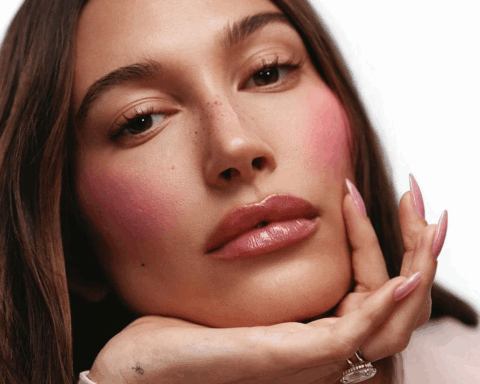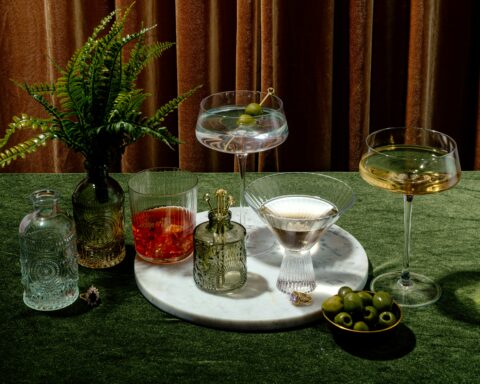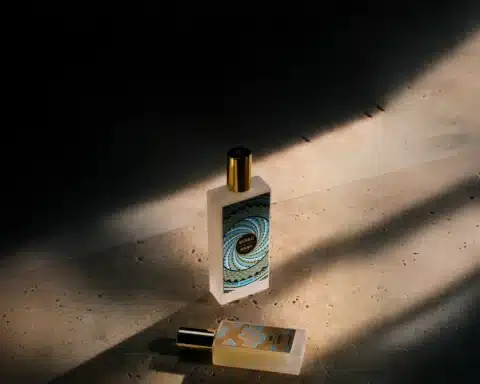Thanks to the film Beetlejuice Beetlejuice, released in 2024 and directed by Tim Burton, gothic fashion is back in the spotlight. (Re)discover this cyclical trend, which is causing controversy between fashion victims and true afficionados.
Sometimes adored by the fashion world, sometimes sidelined, the Gothic movement has just replaced this summer’s Brat Girl. We’re turning to a darker side that echoes the famous autumnal period of Halloween.
Born in the late 70s in Great Britain, the gothic style is directly linked to rock and punk music culture. At the same time as bands were renewing themselves, new directions were being taken, such as glam rock and cold wave. Fashions responded to each other, mixing and distinguishing themselves over time. Increasingly, the specialist press shared this trend, associating the term gothic with music, then with groups, then more widely with the public. The movement became independent in the 80s. Although it declined with the advent of other movements, such as techno, disco, pop and grunge, a close-knit community has continued this lifestyle to this day.
It’s important to note that, although medieval Gothic culture relates to the architecture of churches and historic buildings, and members sometimes misappropriate religious and spiritual symbols, the movement has no direct connection with religion. Instead, it drew inspiration from a variety of arts, from music and fashion to film and literature.
Gothic aesthetics
Voir cette publication sur Instagram
Gothic fashion is a work of clothing in its own right. Romantic, rock, cybergoth, gothic lolita, casual goth, Victorian goth, tradgoth… This movement has several sub-genres. The use of black is the guiding principle. Corsets, lace, tights, big boots, heels, long dark dresses, high socks, vinyl, leather, smoky make-up and brown hair are all characteristic of this style.
Voir cette publication sur Instagram
The raven and the bat are recurring elements in gothism. Driven by a certain melancholy, this fashion explores various universes, more or less fantastic, sinister or poetic. Creative and personal expression is the watchword, and the universal constant of the gothic aesthetic is the precision of the silhouettes.
Voir cette publication sur Instagram
The cinema in the spotlight
If the series ‘Wednesday’, released in 2022, galvanised the public and propelled gothism to the top of the bill, Tim Burton’s film Beetlejuice Beetlejuice once again put the spotlight on this style. Alongside the film’s dramatic and theatrical outfits, actresses Winona Ryder and Jenna Ortega promoted the film in looks that echoed this universe. The Burtoncore trend comes directly from Beetlejuice and the whimsical world of the director, whose filmography also includes Beetlejuice (1988), Edward Scissorhands (1990), Mr Jack’s Christmas (1993), The Funeral (2005) and Sweeney Todd: The Evil Barber of Fleet Street (2007).
Voir cette publication sur Instagram
Barry Sonnenfeld’s The Addams Family (1991), Francis Ford Coppola’s Dracula (1992), Henry Selick’s A Strange Christmas for Mr Jack (1993) and James Watkins’ The Lady in Black (2012) are other films that represent the Gothic sphere through the prism of the 7th art.
A trend called into question
Adopted by a number of celebrities and it-girls, burtoncore and its Succube Chic variant have spread across social networks. Many people are sharing their make-up tips, hair tutorials and dark silhouettes that reveal their inner goth.
@morgane.winchester Qu’est-ce que tu en penses ?🧐 Plutôt une occasion de valoriser l’image des gothiques, ou bien une banalisation d’une culture à respecter ?✨ #pourtoi #foryou #suivis #newtrend #timburton #burtoncore #timburtonstyle #beetlejuice #beetlejuicetiktok #halloween #question #gothique #gothgirl #gothgirl #gothmakeup #metalheadgirl #metalhead #CapCut ♬ son original – Morgane.Winchester
But not all true goths, who embody this style on a daily basis, appreciated the trend. Many members of the community admitted that the trend helped to raise awareness of their fashion. But they also pointed out that the gothic movement was first and foremost a state of mind, far removed from costume and couture appropriation. And this at a time when goths are still the victims of harassment and mockery, both on the Internet and in the street.
Read also: The preppy style, fashion’s trendiest school uniform
Featured photo: © Unsplash















